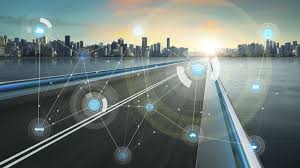Source: itproportal.com
Amid accelerated innovation in fields like artificial intelligence, IoT, and data analytics, the smart cities movement has picked up momentum in recent years. With 68 per cent of the global population set to live in urban areas by 2050, according to United Nations estimates, the push to make the world’s cities more connected, efficient, and citizen-friendly comes at an opportune time.
Big data lies at the heart of smart city innovation. Drawing on data from connected devices, public agencies, private citizens, and more, cities will be able to optimise their operations and effectively manage change as more and more people call them home.
The payoff will be significant. The McKinsey Global Institute calculates that smart city technologies have the potential to boost key urban quality-of-life indicators by 10 to 30 per cent. While the benefits of smart cities will be far-reaching, three areas in particular – traffic management, public safety, and infrastructure maintenance – attest to why data-driven innovation is crucial to the future of urban life.
Intelligent traffic management
- What are Smart Cities? Everything you need to know
Talk of transportation in the smart city often centres on the distant prospect of autonomous vehicles, but cities are already harnessing data to deliver big improvements in urban mobility. This trend will only accelerate over the coming years, with revenue from traffic-focused smart city technologies more than doubling from $2 billion in 2019 to $4.4 billion in 2023.
Data collected by IoT sensors and CCTV cameras, for instance, can be utilised to help city planners address bottlenecks, make traffic flow more efficient, and reduce congestion. Citizens also benefit from open data: With real-time access to traffic information, for instance, commuters can better plan their journeys and avoid congestion.
Traffic management platforms already exist that combine data from public agencies, connected cars, camera feeds, IoT sensors, mobility apps, and many other sources – just one example of how the intelligent use of big data can not only enable better traffic management, but also save lives.
From cameras and sensors that can monitor parking availability, to traffic lights fed data in real time to facilitate more efficient traffic flow, big data is fuelling a new wave of transportation innovation – and while such solutions are a boon to city officials and municipal planners, the end users – ordinary citizens – are the biggest beneficiaries.
Promoting public safety
- What makes smart cities, smart?
Public safety is on track to be a major growth market for smart cities, with forecasters calling for the market to reach $295.98 billion by 2023.
What does public safety technology look like in practice? It’s the use of GPS data to find missing persons. It’s the collection of data from IoT devices and sensors to feed vital information to emergency responders for more accurate dispatching. It’s the deployment of AR-equipped drones that overlay critical information for emergency responders, allowing for more effective search-and-rescue operations during major events like the California wildfires.
It’s also the use of data-driven policing – through heat maps, gunshot detection technology, smart cameras, and more. Such use cases have sparked fears of Big Brother’s encroachment, and while it will be crucial to balance civil liberties and public safety, smart city planners can’t afford to lose sight of the promise of big data for public safety. McKinsey projects that smart city public safety solutions can reduce fatalities by up to 10 per cent, crime incidences by up to 40 per cent, and emergency response times by up to 35 per cent.
Managing smart cities’ infrastructure
- How smart cities can underpin our drive to a sustainable world
Population growth and climate change will both pose significant, overlapping challenges to cities’ infrastructure over the coming decades – but big data can help city planners adapt.
Monitoring hard-to-reach areas, drones can generate rich, actionable data to guide decisions on infrastructure repair and maintenance, thereby preventing potentially deadly structural deficiencies from going unaddressed. We have all seen the catastrophic damage that can be caused by an oversight of dam maintenance — vulnerabilities that will more likely be caught with the use of smart data to monitor and check for anomalies.
Beyond damage prevention, the use of data not only keep structures physically sound, but also keeps cities’ arteries pumping. Supply chains depend on smooth roads, sound bridges and well-functioning trains — without them, economies go into freefall. Utilising data, governments can ensure these lifelines’ long-term integrity.
Data on resource availability, supply and demand, and climate will enable smarter electric grid management, as IoT devices feed operators information in real time to drive more intelligent decisions about supply management during both peak and off-peak hours.
For municipalities aspiring to be truly smart cities, having a robust data strategy in place is paramount. The data they use to streamline and optimise their operations must be rich and abundant – which is why city planners must take a holistic approach to data collection and sharing. This will entail public-private collaboration and continued investments in analytics capabilities. When cities commit to this approach, they’ll be significantly smarter – and their citizens will be much better-off.
